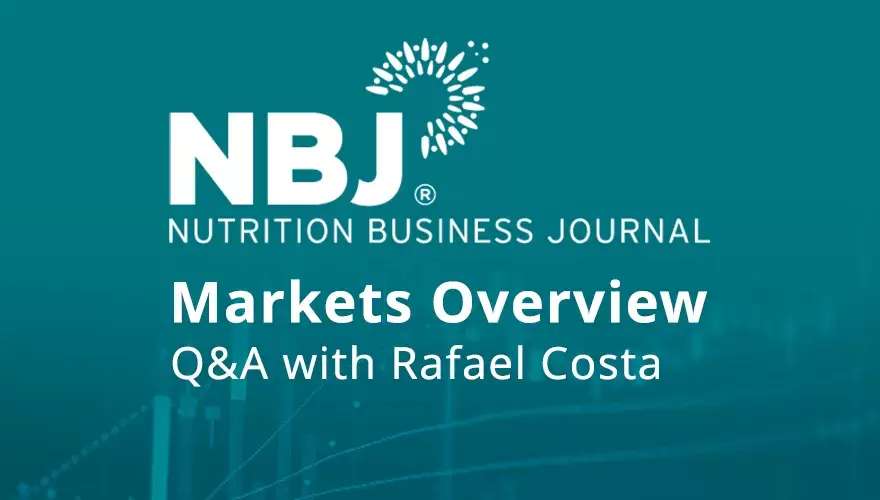NBJ Global Markets Overview - Q&A with Rafael Costa

Leading sales across North and South America for the mammoth contract manufacturer ACG, Rafael Costa keeps his feet on the ground in two hemispheres and a wide range of markets faced with a wide range of economic conditions and regulatory systems. We asked him for his quick thoughts on what he sees going on for supplements, looking south from the U.S.
NBJ: Which of the South and Latin American markets are looking strongest right now?
Costa: Brazil and Mexico are the two largest markets. Together, they represent 75% of vitamins and supplements sales in Latin America.
NBJ: What are some of the categories driving growth in those markets?
Costa: Vitamins, minerals and supplements, in general, are the predominant categories. In vitamins, historically the region has a predominance of vitamin C and calcium, the source being changed to calcium citrate malate. Most recently vitamin D, vitamin K2, zinc and magnesium have increased sales substantially. Within supplements, gastrointestinal (probiotics, fiber and enzymes), joint health (undenatured type II collagen, MSM and curcumin), sarcopenia (creatine), along with weight loss and multivitamins, drive most of the growth.
NBJ: Which markets do you see as promising in the near-term future? Which channels are rising or fading?
Costa: Brazil and Mexico are expected to keep growing. Also, Colombia and Chile are promising areas. In regard to sales channels, traditional retail is by far the largest sales channel and still growing, while online, MLM and direct selling are rising substantially. Compounding pharmacies also represent a big portion of the Brazilian market.
NBJ: Where are the economic conditions impacting supplement sales?
Costa: Political instability and economic conditions always have big impact on supplement sales across the Latin American market. Recent presidential elections have created an unsecure environment, which inhibits expenditure from population and investment from brands.
NBJ: Do you see any changes in the MLM channel in the South American markets?
Costa: For economic and regulatory reasons, in general, the MLM channel should continue to grow across Latin America, as it represents a unique opportunity to educate and better position supplements to most consumers versus other market channels.
NBJ: What should U.S. companies understand about South America and what the future holds?
Costa: In general, U.S. products and brands are well accepted across Latin America. A U.S. company interested in doing business in Latin America should understand the regulatory environment and legal requirements for that specific country. Each country has its own rules and what is feasible in Brazil could not be feasible in Mexico, for example. Finding a local partner, from a distribution to regulatory/ legal standpoint is key, to ensuring a successful product launch, and so you stay compliant with the local laws. Also, it is important to understand that most Latin American sales within the VMS segment come from pharmaceutical brands, as physician indication is still highly important for consumers’ decision making.

 Go Back
Go Back